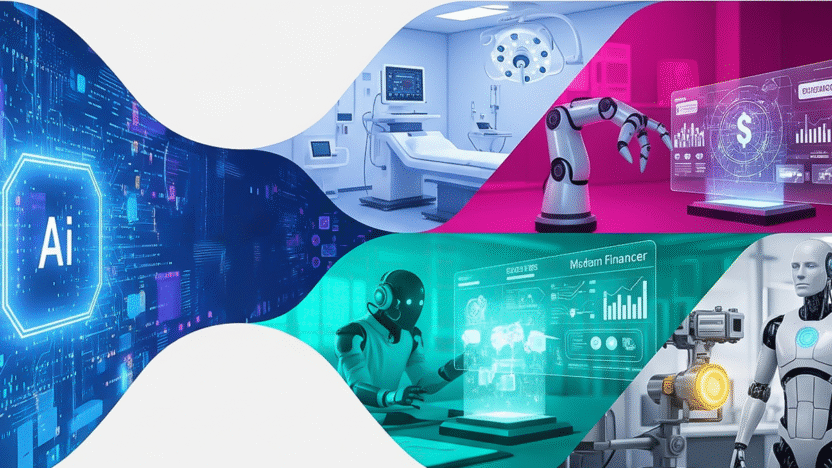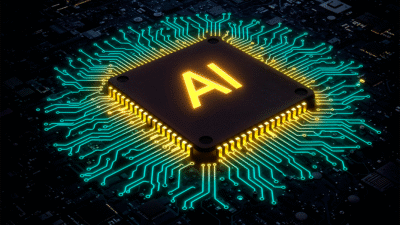In today’s data driven world, building AI/ML systems that deliver real business value goes far beyond creating proof of concept models. The journey from strategy to production involves a deep understanding of business objectives, solid data infrastructure, cross-functional collaboration, and a robust MLOps foundation.
This blog explores the full lifecycle of real world AI/ML development from identifying high impact use cases to deploying scalable models in production environments.
We’ll walk through how to align AI initiatives with business goals, assemble the right teams, and ensure your data is truly ready for modeling. You’ll learn about model development best practices, automation pipelines, and the tools needed to operationalize ML at a scale. We also tackle critical aspects like monitoring model performance, retraining strategies, governance, and ethical AI deployment.
Table of Contents:
- Introduction
- Foundations: Strategy & Data Management
- Model Selection & Training
- MLOps & CI/CD Integration
- Real Time & Edge Deployment
- Ethics, Explainability & Security
- Emerging Tech & the Future
- Conclusion
1. Introduction
- Artificial Intelligence (AI) and Machine Learning (ML) have rapidly transitioned from experimental technologies to critical enablers of business innovation and competitive advantage. From personalized recommendations and fraud detection to predictive maintenance and intelligent automation, the possibilities seem endless. Yet, while the excitement is real, so are the challenges most AI/ML projects never make it past the prototype stage.
- This blog is a practical guide to turning AI/ML concepts into production-grade systems that work reliably in the real world. We’ll cover the entire journey starting with identifying the right use cases, assembling the right teams, and preparing data pipelines, all the way to model deployment, monitoring, and governance.
- Whether you’re launching your first AI initiative or scaling existing models across the enterprise, this post will help you navigate the complexity and build solutions that are not only intelligent but impactful, sustainable, and production ready.
2. Foundations: Strategy & Data Management
Before any model is trained or algorithm deployed, two foundational pillars must be in place: a well defined strategy and robust data management. These determine not only the success of the project but also its ability to scale, adapt, and deliver measurable business impact.
-
Align AI with Business Goals
The first step is strategic alignment. Every AI initiative must be tied directly to a business objective reducing churn, optimizing supply chains, personalizing customer experiences, or automating manual processes. Without clear goals and success metrics (like ROI, accuracy, or cost savings), projects risk becoming expensive experiments.
-
Data as a Strategic Asset
AI/ML models are only as good as the data they learn from. Organizations must treat data as a core business asset ensuring it’s clean, accessible, well-labeled, and representative of the real world problem.
The most successful AI systems are not built on the most complex models they’re built on a solid foundation of business strategy and data maturity.
3. Model Selection & Training
With a strong strategy and high quality data in place, the next step is the heart of any AI/ML system: selecting and training the right model. While it’s tempting to jump straight to deep learning or complex architectures, the best-performing models in production are often the simplest ones that meet business needs with reliability and efficiency.
Choosing the Right Type of Model
Start by matching the model type to the nature of the problem:
- Classification: For predicting categories (e.g., spam detection, fraud classification)
- Regression: For continuous outcomes (e.g., sales forecasting)
- Clustering: For pattern discovery (e.g., customer segmentation)
- Recommendation Systems: For personalization (e.g., product suggestions)
- Natural Language Processing (NLP): For text-based tasks (e.g., sentiment analysis, summarization)
- Computer Vision: For image or video input (e.g., defect detection, OCR)
Balancing Accuracy, Speed, and Interpretability
More complex isn’t always better. Consider:
- Accuracy vs latency: A highly accurate model that takes seconds to respond may not work for real time applications.
- Interpretability: For regulated industries, simple models like decision trees or logistic regression might be preferred for explainability.
Training and Evaluation
Effective training requires:
- Train/validation/test splits to avoid overfitting
- Cross-validation for model robustness
- Hyperparameter tuning (e.g., grid search, Bayesian optimization)
Toolkits and Frameworks
Popular frameworks used in real-world ML training:
- Scikit-learn: Lightweight, great for classical ML
- XGBoost/LightGBM: Highly optimized for structured data
- TensorFlow / PyTorch: Deep learning and advanced custom models
- Hugging Face Transformers: Pretrained models for NLP tasks
4. MLOps & CI/CD Integration
Successfully training a model is only half the battle. To deliver real business value, AI/ML systems must be reliably deployed, monitored, and maintained just like any other software product. This is where MLOps (Machine Learning Operations) and CI/CD (Continuous Integration/Continuous Deployment) practices come into play.
What is MLOps?
MLOps is the set of tools, practices, and cultural philosophies that aim to:
- Streamline the ML lifecycle from development to deployment
- Automate workflows (training, validation, deployment, monitoring)
- Ensure repeatability, scalability, and governance
MLOps bridges the gap between data science and DevOps enabling teams to move models into production quickly, reliably, and safely.
CI/CD for Machine Learning
Just as CI/CD automates software delivery, it can be extended to ML to handle:
- Continuous Integration: Code + model versioning, unit tests, linting, data validation
- Continuous Delivery: Automated model packaging, testing, and deployment to staging/production
- Continuous Training: Retraining models as new data arrives or performance drifts
Popular tools:
- CI Tools: GitHub Actions, Jenkins, GitLab CI
- ML CI/CD Platforms: MLflow, Vertex AI Pipelines, AWS SageMaker Pipelines, Kubeflow
Version Control: Code, Data & Models
ML introduces new versioning needs:
- Code: Use Git to manage notebooks, scripts, and configurations
- Data: Use tools like DVC, LakeFS, or Delta Lake for dataset versioning
- Models: Track model metadata (parameters, metrics, artifacts) using tools like MLflow or Weights & Biases
Testing ML Workflows
Testing ML systems involves more than unit tests:
- Data validation tests (e.g., schema consistency)
- Model performance tests (e.g., accuracy threshold checks)
- Integration tests for pipelines and APIs
- Shadow deployment for comparing new model behavior with the current production version
Deployment Patterns
Models can be deployed using:
- Batch predictions (for nightly reports, fraud scoring, etc.)
- Real-time APIs (for user-facing applications and personalization)
- Edge deployment (for mobile, IoT, low latency use cases)

5. Real Time & Edge Deployment
As AI applications move from batch analytics to real-time interactions, deploying models with low latency and high reliability becomes essential. Whether you’re powering instant recommendations, fraud detection, or predictive maintenance on remote devices, deployment environments must be tailored to meet performance, scalability, and hardware constraints.
Real Time Inference in Production
Real-time ML systems respond to requests in milliseconds or seconds. They’re typically used in:
- E-commerce: Personalized recommendations
- Finance: Instant fraud scoring
- Healthcare: Real-time diagnostics or alerts
- Customer service: Chatbots and NLP-based assistants
Key components:
- Model Serving Layer: REST/gRPC APIs using tools like TensorFlow Serving, TorchServe, FastAPI, or ONNX Runtime
- Inference Infrastructure: Auto-scaling APIs running on Kubernetes, SageMaker Endpoints, or Google Vertex AI
- Caching and Batching: Used to reduce latency and optimize throughput
- Feature Stores: Real-time retrieval of features (e.g., using Tecton or Feast)
Edge AI Deployment
Edge AI brings intelligence closer to where data is generated on devices like phones, sensors, drones, or embedded systems. This reduces latency, lowers bandwidth usage, and improves data privacy.
Use cases:
- Autonomous vehicles: Onboard decision-making
- Industrial IoT: Real-time fault detection
- Retail: Smart shelves and vision-based analytics
- Healthcare: Wearables monitoring patient vitals
6. Ethics, Explainability & Security
As AI/ML systems increasingly influence real-world decisions who gets a loan, how diseases are diagnosed, or what content is shown online ethics, transparency, and security are no longer optional. They are critical requirements for building AI systems that are not only effective but trustworthy and compliant.
Ethical AI: Fairness and Accountability
AI must be fair, inclusive, and non-discriminatory. Biased training data or unchecked models can lead to harmful, unequal outcomes.
Strategies to ensure fairness:
- Bias audits: Analyze models for disparate impact across demographics.
- Fair sampling and labeling: Ensure diverse and representative training data.
- Adversarial debiasing: Use algorithms designed to reduce bias during training.
- Inclusive development teams: Build diverse teams to reduce blind spots.
Organizations should establish internal AI ethics review boards and align with frameworks like OECD AI Principles or EU AI Act.
Explainability & Transparency
As AI systems grow more complex, understanding why a model made a decision is vital especially in regulated sectors like healthcare, finance, and legal.
Tools and techniques:
- SHAP/LIME: Model agnostic techniques for local explanations
- Feature importance charts: Help visualize which inputs matter most
- Counterfactuals: “What if” scenarios to explore decision boundaries
- Model cards: Documentation of model performance, intended use, and limitations
Explainability builds trust, enables debugging, and supports regulatory compliance.
Security: Protecting Models and Data
AI/ML systems introduce new security risks:
- Adversarial attacks: Subtle input manipulation to mislead models (e.g., fooling an image classifier)
- Model theft: Reverse engineering or copying of proprietary models
- Data poisoning: Injecting bad data to corrupt training outcomes
- Inference attacks: Extracting sensitive training data from models
Governance and Compliance
Legal frameworks are evolving rapidly:
- GDPR, HIPAA, CCPA: Regulations on data collection, usage, and consent
- EU AI Act: Classifies AI systems by risk level and mandates transparency, risk management, and human oversight
7. Emerging Tech & the Future
As organizations master the fundamentals of real-world AI/ML deployment, the next frontier lies in leveraging emerging technologies that promise to reshape the future of intelligent systems. The rapid pace of innovation is bringing new tools, paradigms, and capabilities that go beyond traditional supervised learning pipelines.
Foundation Models and Generative AI
The rise of foundation models like OpenAI’s GPT, Google’s Gemini, or Meta’s LLaMA marks a shift from task-specific models to general-purpose architectures that can perform a wide range of tasks with minimal fine-tuning.
- Generative AI enables content creation, synthetic data generation, code writing, and more.
- Few-shot and zero-shot learning allow businesses to adapt models quickly with less labeled data.
- Prompt engineering is becoming a new discipline, blending linguistics and logic.
These models are becoming integral in customer service, content moderation, software development, and R&D acceleration.
Federated & Privacy Preserving Learning
With increasing concern around data privacy, federated learning allows models to train across decentralized data sources (e.g., mobile devices, hospitals) without moving sensitive data.
- Used in healthcare, finance, and IoT where data centralization is risky or impossible
- Often combined with differential privacy and secure multi-party computation for additional protection
These approaches are shaping the future of AI in regulated industries.
Edge AI at Scale
As edge hardware becomes more powerful and affordable, real-time AI at the edge is expanding:
- AI chips (e.g., NVIDIA Jetson, Google Coral, Apple Neural Engine)
- 5G connectivity enabling faster model syncs and federated updates
- Scalable deployment frameworks like Edge Impulse and Azure Percept
Expect broader adoption in retail, manufacturing, smart cities, and autonomous systems.
AI Agents & Autonomous Workflows
The future of AI isn’t just smarter models but autonomous agents that can reason, act, and adapt over time. These systems:
- Interact with APIs and software
- Perform multi-step tasks with goals
- Learn continuously from feedback
Examples include LangChain, Auto GPT, and emerging autonomous agents that blur the line between ML and software robotics.
Quantum AI and Bio-Inspired Models
Though still nascent, quantum computing could revolutionize AI by solving problems classical systems cannot. Meanwhile, bio-inspired models such as neuromorphic computing aim to replicate how the human brain processes information.
These technologies promise breakthroughs in:
- Optimization
- Drug discovery
- Climate modeling
- High dimensional pattern recognition
8. Conclusion
- Building real-world AI/ML systems is no longer just a technical exercise it’s a cross-functional, strategic effort that blends data, engineering, operations, ethics, and business alignment. From defining the right problem to deploying and maintaining models at scale, success depends on mastering the entire lifecycle not just the modeling phase.
- This journey begins with a strong foundation: clear business objectives, high-quality data, and collaborative teams. It continues with careful model selection, robust training practices, and production grade deployment through MLOps and CI/CD. Real-time and edge applications extend AI’s reach into the physical world, while ethical safeguards and security frameworks protect both people and organizations.
- Looking ahead, emerging technologies like generative AI, federated learning, edge intelligence, and autonomous agents will continue to expand what’s possible. However, with that power comes responsibility to build systems that are transparent, accountable, and trustworthy.
- The organizations that thrive in the AI era won’t just build smarter models they’ll create resilient AI ecosystems that adapt, scale, and deliver real value in dynamic environments. It’s not just about AI that works it’s about AI that works for people, at scale, and over time.





I’ve already bookmarked this post for future reference. Your work is invaluable!
I’m thrilled the post made it to your bookmarks! Thanks for your support.
Wow, you’ve outdone yourself! This post is packed with useful tips and advice.